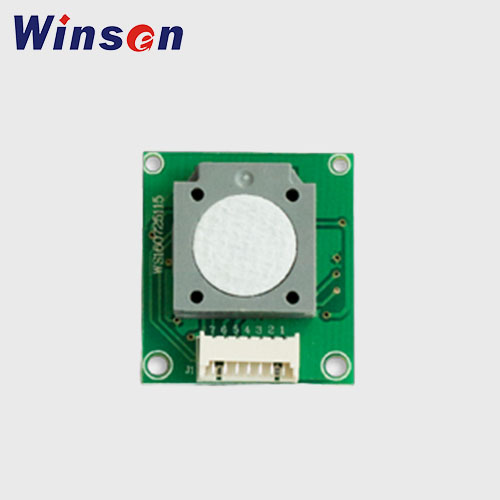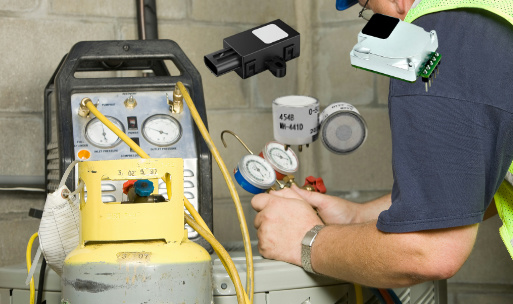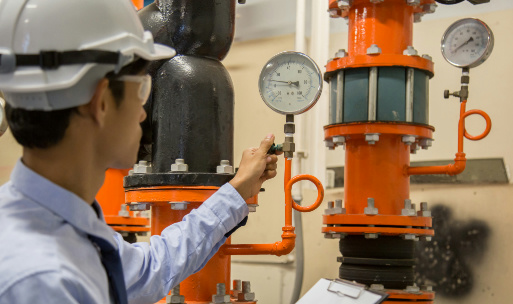Compared with other methods, electrochemical(EC) formaldehyde sensors have the advantages of strong anti-interference ability, single response, high sensitivity, accurate measurement results, low detection limit, and good recovery response. Therefore, electrochemical detection principle has been recognized by most people and is the focus of future research on formaldehyde gas sensors. The detectors with EC HCHO sensors has features of high precision, short response time and good cost and so it’s popular for household use.
Formaldehyde (HCHO) Sensor for Indoor Air Quality
Formaldehyde is a colorless, flammable, strong-smelling chemical that is used in building materials and to produce many household products in the long period of 3 to 15 years. Higher emissions of Formaldehyde were observed with increases in temperature and humidity. Short term exposure may experience effects such as nausea, skin irritation, burning in the eyes, nose, and throat. Long and high content exposure could also cause cancer in humans. Formaldehyde is listed as a human carcinogen by the International Agency for Research on Cancer (IARC).
There are a lot of ways to reduce formaldehyde on the market. The first step is to detect the content of formaldehyde in the air. Although formaldehyde is irritating in smell,but in general the concentration of formaldehyde may have exceeded the standard at home when we smell it or have allergic syndrome. In another case, the pungent smell is not necessarily formaldehyde, it may be other gases.

Therefore, it’s not reliable to judge the HCHO content simply based on the smell. To test the content, it’s necessary to use some devices. According to relevant market research, there are currently at least 9 methods that can detect the concentration of formaldehyde in the air, including AHMT spectrophotometry, gas chromatography, acetylacetone fluorescence spectrometry, high performance liquid chromatography, and mid-infrared laser absorption spectroscopy. These methods have high costs, and the user group is generally experimentalists in the lab. The methods accessible to ordinary consumers mainly include: metal oxide semiconductor(MOS) method, electrochemical sensor(EC) method, phenol reagent spectrophotometry, photoelectric photometry, etc.

ZE08K-CH2O Introduction
ZE08K-CH2O from Winsen is a general purpose and miniaturized sensor module based on mature electrochemical principle. The module has good selectivity and stability. Built-in temperature sensor to make temperature compensation for improved precision. It has the digital output and analog voltage output at the same time. Excellent circuit design saves development time for engineers.

- The formaldehyde sensor can be integrated into air monitors, air purifiers, fresh air systems, smart air conditioners and other equipment together with PM2.5 sensors, air quality sensors, temperature and humidity sensors, etc. , and jointly create a healthy living environment for consumers.
- This sensor module is also widely used in many testing applications, portable air detectors, and real-time quality monitoring stations combined with IoT.
- Handmade purpose out of personal interest, it could be used with Arduino and Raspberry Pi.
- The module has high sensitivity &resolution to HCHO (≤0.01ppm) in wide range (0-5ppm)
- It provides multiple output methods: UART/Analog Voltage output
- The module has stable performance in long term, excellent ability of Anti-interference
- Temperature compensation for improved accuracy, excellent linear output
- It has prolonged life of 5 years and low power consumption
| Model No. | ZE08K-CH2O |
| Target Gas | CH2O |
| Interference Gas | Alcohol, CO &ect. |
| Output Data | DAC(0.4~2V standard voltage output,corresponding concentration: 0 ~ full scale ) |
| UARToutput(3VTTLElectrical Level) | |
| Working Voltage | 3.7V~5.5V |
| Warm up time | ≤3 minutes |
| Response time | ≤60s |
| Resume time | ≤60s |
| Detection Range | 0~5ppm |
| Resolution | ≤0.01ppm |
| Operating Temp. | -20℃~50℃ |
| Operating Hum. | 15%RH-90%RH(No condensation) |
| Storage temp. | 0~25℃ |
| Working life | 5 years (in clean air 18℃~ 25℃) |





